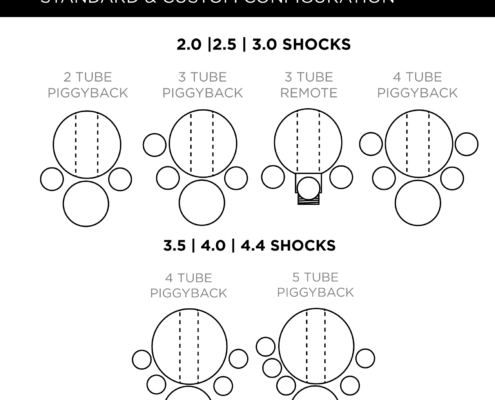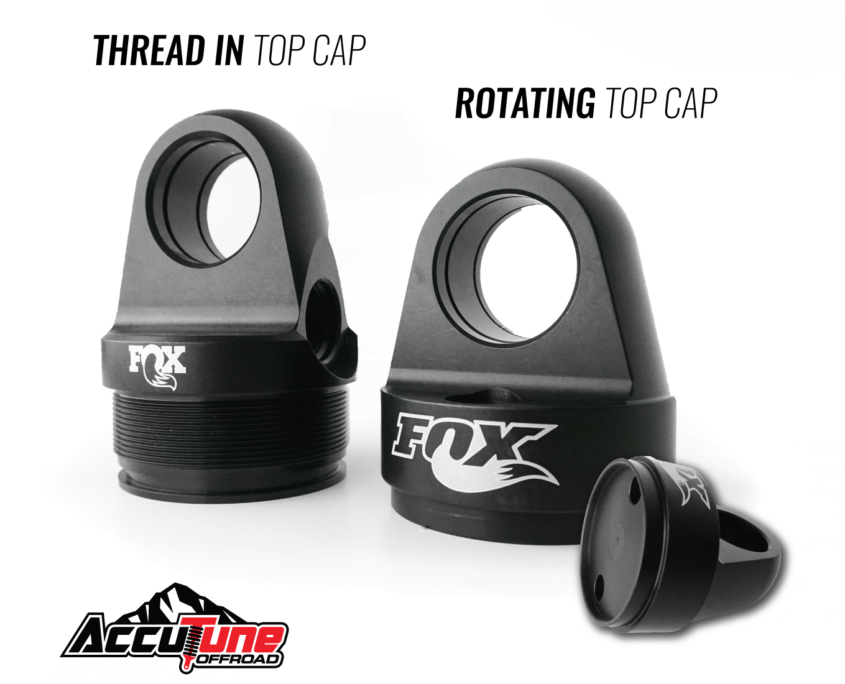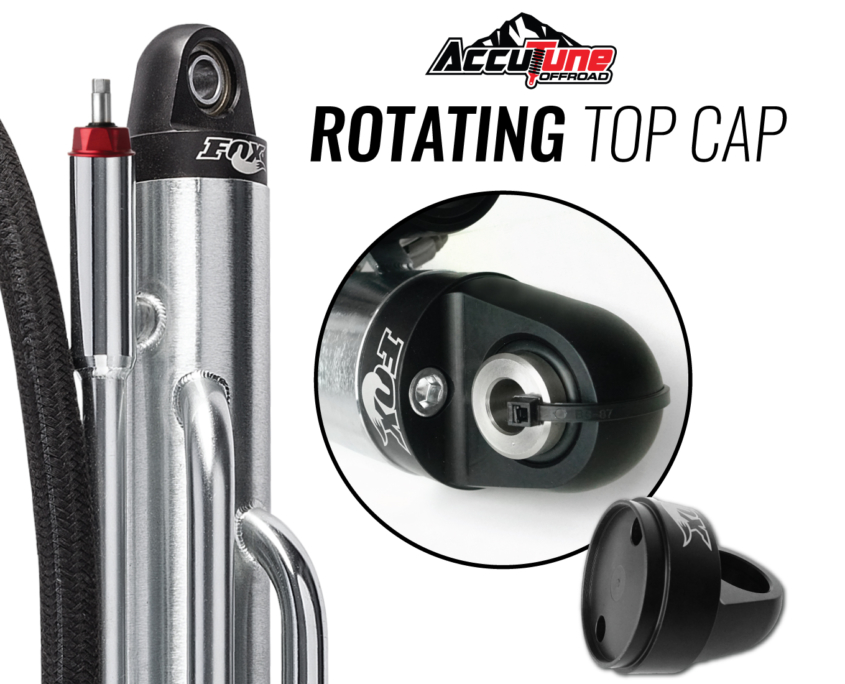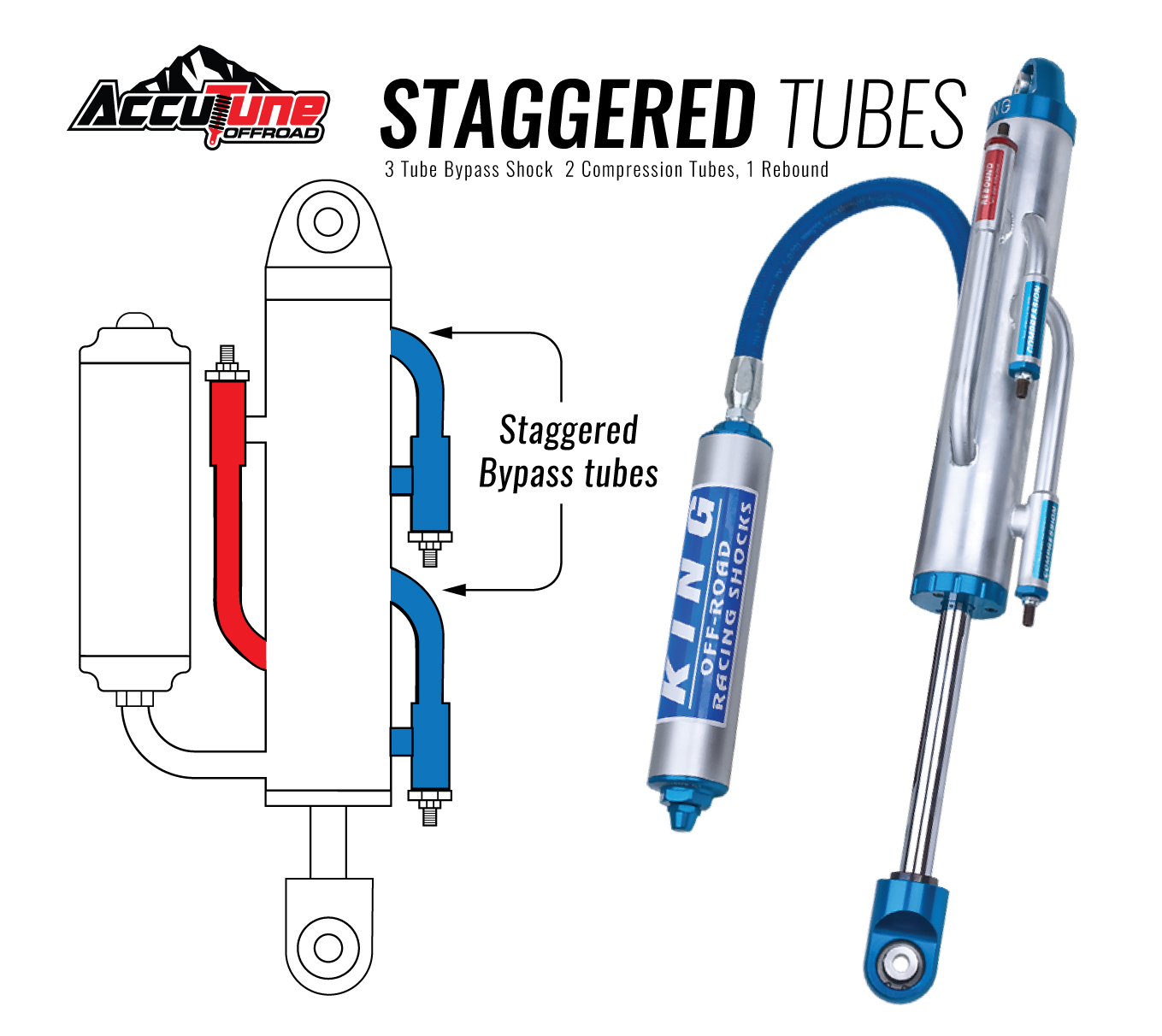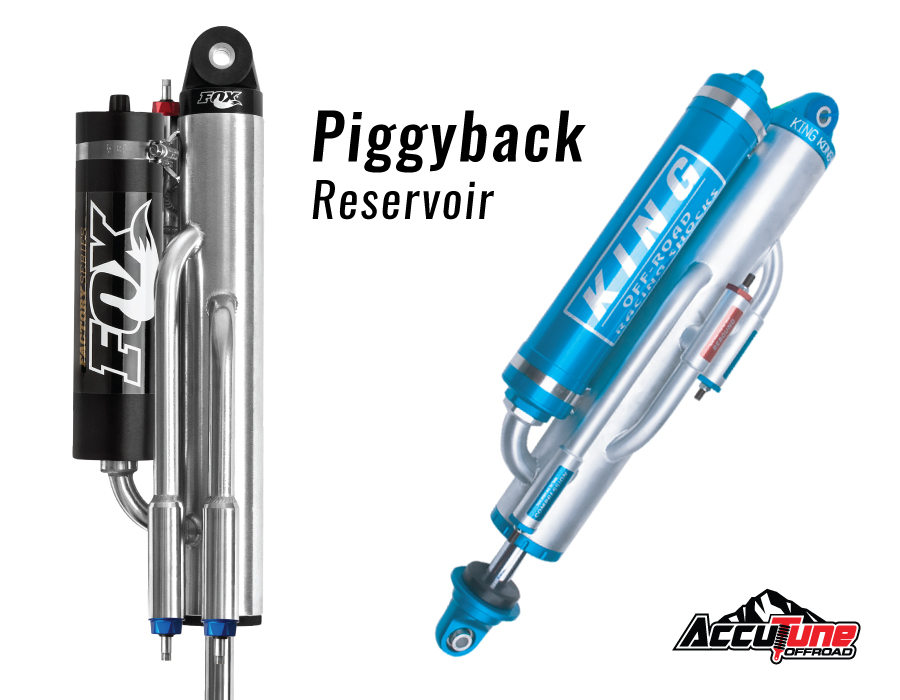March 23, 2021
- How do Bypass Shocks Work?
- Shock Zones & Basic Tube Layout
- Bottom Take Off Reservoir
Bypass Shocks PART 2
- Off the Shelf Options
- Multiple Compression & Rebound Tubes
- Staggered vs Overlapping Tubes
- Piggyback vs Remote Reservoir
- Shock Diameter
- Tube Layout Around Body
- Tube Heights & Diameter
- Custom Setup Recommendation
- Fox vs King Comparison
- Check Valve Design
- Pistons
- Bypass Adjusters Screws
- Piston Rods
- Oil Seals
- Bypass Shock Setup
- Up Travel
- Motion Ratio – Coilover & Bypass
- Total Weight
- Weight Distribution (front/rear)
- Unsprung Weight
Bypass shocks are available in a wide range of off-the-shelf configurations—each with its own impact on cost and performance. In Part II, we’ll break down the various options and the benefits they offer for different applications.
Before diving in, it’s important to note that one of the most common tuning issues we see with bypass shocks is insufficient oil flow through the bypass tubes. When flow is too limited, the soft zones aren’t soft enough, and the stiff zones can’t deliver the control they’re designed for—leading to poor ride quality and reduced performance. Proper tube sizing and layout are key to unlocking the full potential of a bypass setup.
Tube Orientation
Traditionally, bypass shocks are built by starting with a smooth shock body and threading in a top cap. From there, the bypass tubes are indexed and welded in fixed positions based on the cap’s orientation. This method locks the tube locations in place, limiting flexibility in design and tuning.
One drawback of this construction is that if either the cap or the body is damaged, both typically need to be replaced—adding to cost and downtime.
Thread In Caps
Thread-in caps are the traditional and most commonly used construction method for bypass shocks. Most manufacturers rely on this approach, offering standard configurations in 2-tube, 3-tube, and 4-tube layouts. These are typically available in both standard and 90-degree orientations to accommodate different mounting needs. For more specialized setups, custom tube configurations can also be ordered.
Rotating Top Caps
Fox transitioned all of their bypass shocks to a rotating top cap design several years ago, and other manufacturers are gradually following suit. This design allows the shock body to be clocked for better fitment on the vehicle, which is especially helpful in tight or complex mounting situations. However, while rotating caps offer added flexibility, they are not a substitute for proper custom tube layouts when performance tuning is the priority.
Bypass Shock Tube Count
Bypass shocks can be configured with multiple compression and rebound tubes, and in general, the more tubes you have, the more tunable the shock becomes. Each additional tube allows finer control over specific parts of the shock travel, helping to dial in both comfort and performance. Here’s a breakdown of the most common configurations:
2-Tube Bypass Shocks
Typically equipped with one compression and one rebound tube.
-
Basic and compact design.
-
The transition between the ride zone and bump zone is sharp, which can result in a more aggressive feel.
-
Best for simple setups or where space is limited.
3-Tube Bypass Shocks (Triple Bypass)
The most popular configuration, with two compression and one rebound tube.
-
The second compression tube helps smooth out the transition through the compression stroke.
-
Offers much better control than a 2-tube without adding significant complexity.
-
Ideal for most off-road setups.
4-Tube Bypass Shocks
Adds a second rebound tube for improved control.
-
Helps manage rebound more precisely, especially in long-travel or on-axle applications.
-
Highly recommended where excessive rebound force can lead to instability.
5-Tube Bypass Shocks
Includes three compression and two rebound tubes.
-
The third compression tube is typically positioned low on the body, below the ride zone.
-
Great for smoothing out large g-outs or fast whoops in high-performance applications.
-
Best suited for race or high-speed desert setups.
Trim Tubes
These are small-diameter, short-length bypass tubes placed strategically along the shock body.
-
Most commonly located at the very top for fine-tuning the bump zone.
-
Can also be added just below ride height to refine the ride zone.
-
Excellent for large-diameter shocks where extra adjustability is needed.
-
Trim tubes are a go-to feature for maximizing both comfort and control when you’re running full-size, high-performance bypasses.
Overlapping Tubes
Overlapping bypass tubes significantly increase oil flow in the ride zone—essentially doubling it—which greatly enhances tunability. This increased flow allows for finer adjustments to ride quality and control, especially at lower shaft speeds where comfort matters most.
Because overlapping tubes provide this “free” improvement in flow and damping range without increasing shock size or complexity, they are generally preferred over staggered tube layouts. Both Fox and King Race Series shocks come standard with overlapping tube configurations for optimal performance.
Staggered Tubes
Historically, some tuners have favored staggered tube layouts because each zone can be tuned independently without influencing the others. This separation offers precise control over specific parts of the travel. King’s PreRunner Series bypass shocks come standard with a staggered tube configuration for this reason.
Tube Diameters
Bypass tube diameter plays a critical role in shock performance and tunability. The larger the tube, the more oil it can flow—allowing for greater adjustment range and more precise tuning.
The most common tube sizes are 5/8″ and 3/4″ in diameter, which offer a good balance of flow and packaging. For larger shocks or custom applications, 1″ diameter tubes can be used to significantly increase flow capacity.
We’ll take a closer look at bypass tube sizing and placement later in this series to better understand how each factor impacts performance.
Bypass Shock Part II FAQ:
Can a bypass shock have too much flow?
Yes, in theory, a bypass shock could have more tunability than you actually need. However, in our experience, we haven’t encountered a situation where the bypass tubes flowed more oil than could be effectively tuned. If your shock feels too soft and can’t be made stiffer through revalving, the issue usually lies elsewhere—such as the shock being undersized or the suspension’s motion ratio being too aggressive.
Do piggyback shocks offer better cooling than remote reservoirs?
There are two factors to consider: cooling efficiency and oil capacity.
-
Cooling: Piggyback shocks have the reservoir attached directly to the shock body, so hot oil circulates quickly through the reservoir, enhancing heat dissipation.
-
Oil Capacity: Remote reservoir shocks use a long hose to connect the reservoir, and hot oil may not always reach it as efficiently. However, the longer hose and remote reservoir hold more oil overall, which increases total heat capacity and slows the shock’s temperature rise.
In practice, the cooling differences between piggyback and remote reservoirs are minor. Choose the option that best fits your vehicle packaging and suspension layout.
Piggyback shocks have the reservoir mounted very close to the shock body, so hot oil is likely to flow directly into the reservoir for effective cooling. In contrast, remote reservoir shocks with long hoses may cause the hot oil to cycle back and forth within the hose without fully reaching the reservoir, potentially reducing cooling efficiency.
Remote reservoir bypass shocks with long hoses hold more oil than piggyback bypass shocks. This greater oil volume helps the shock heat up more slowly during rough terrain use, improving durability and consistency. Increasing oil capacity is one reason Trophy Trucks use such large shocks to handle extreme conditions.
Summary
Off-the-shelf bypass shocks come in various tube configurations, each impacting fitment and performance. For example, a three-tube bypass shock with 3/4″ overlapping tubes can flow three times more oil than a similar shock with 5/8″ staggered tubes. When oil flow is too low, shocks tend to feel harsh over chop and too soft on g-outs. Increasing oil flow by three times significantly enhances tunability, allowing for better control and improved performance in both g-outs and chop conditions.



